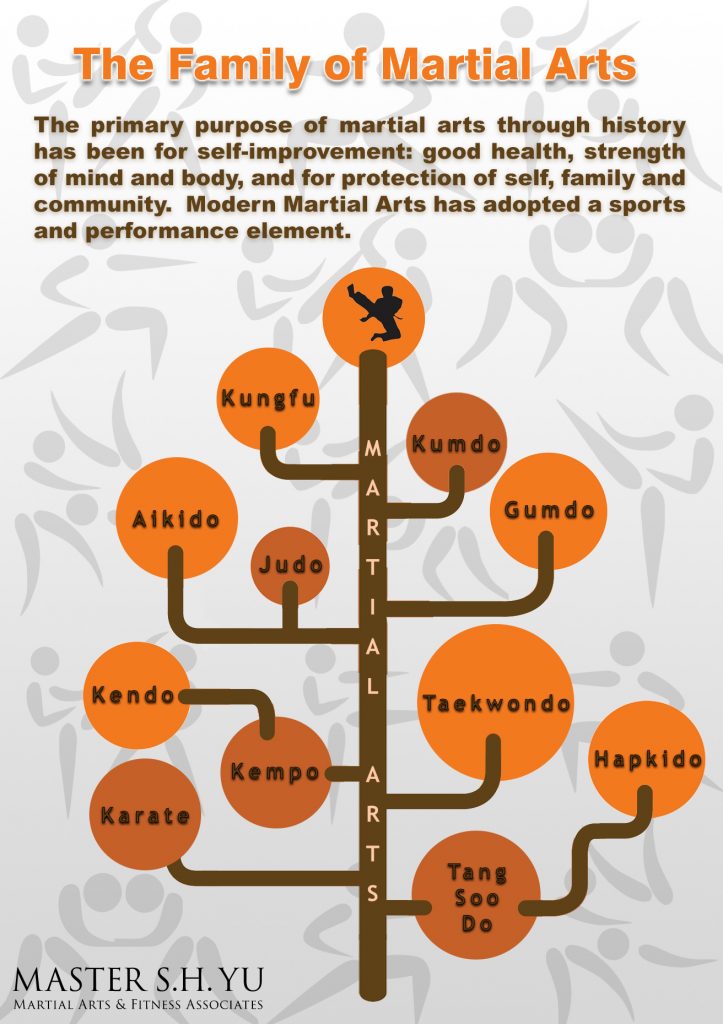Introducing The Range Of Martial Arts Disciplines: An Overview From Martial Arts To Taekwondo
Introducing The Range Of Martial Arts Disciplines: An Overview From Martial Arts To Taekwondo
Blog Article
Authored By-Stender Lemming
Are you tired of sensation bewildered by the vast world of martial arts? With a lot of designs to select from, it can be simple to obtain lost in a sea of strikes, kicks, and strange names. But fear not!
This conversation will debunk the various martial arts designs, taking you on a journey from the powerful strikes of Karate to the vibrant kicks of Taekwondo. Get ready to reveal the origins, techniques, and approaches behind these ancient art forms.
So, tighten your belt and prepare to start an enlightening exploration right into the captivating globe of fighting styles.
Beginnings of Martial Arts Styles
The origins of fighting styles styles can be mapped back to old people and their need for self-defense and battle techniques. Throughout background, various cultures created their own one-of-a-kind approaches of combating, each with its own collection of strategies and philosophies.
In China, as an example, martial arts styles such as Martial art and Tai Chi were developed as a way of protection and improving physical and mental well-being.
In Japan, the samurai warriors produced styles like Martial arts and Judo, concentrating on technique, precision, and proficiency of the body.
Similarly, in Korea, Taekwondo became a martial art emphasizing high kicks, fast activities, and psychological determination.
These very early human beings laid the foundation for the diverse selection of martial arts designs that exist today, each with its own rich background and cultural value.
Techniques and Training Methods
To master martial arts designs, specialists should discover different techniques and training approaches.
Strategies are the certain movements and activities made use of in combat, such as punches, kicks, throws, and obstructs. Different fighting styles styles have their very own distinct collection of methods that practitioners must grasp through strenuous training.
Training techniques vary relying on the design, yet they typically entail a combination of physical conditioning, drills, sparring, and kinds.
https://augustlzjuf.ja-blog.com/33319970/untangling-the-secret-of-numerous-fighting-style-disciplines-a-guide-to-martial-arts-taekwondo-and-a-lot-more is important to develop strength, versatility, and endurance. Drills assist specialists fine-tune their strategies and improve their rate and precision.
https://www.reuters.com/lifestyle/musk-will-train-if-las-vegas-martial-arts-cage-match-takes-hold-2023-06-24/ enables specialists to exercise their methods in a regulated, realistic atmosphere. Forms, likewise known as kata, are deliberate series of movements that aid experts establish muscle mass memory and emphasis.
Viewpoints and Concepts
Checking out the ideologies and principles of martial arts styles can supply you with a much deeper understanding of your chosen technique. martial arts game has its very own unique philosophy and set of leading concepts that form the method it's exercised.
As an example, Karate highlights discipline, regard, and self-constraint. It shows experts to concentrate their body and minds, enabling them to safeguard themselves while maintaining a sense of internal peace.
On the other hand, Taekwondo positions a solid emphasis on speed, agility, and adaptability. Its principles are rooted in the tenets of courtesy, stability, willpower, self-discipline, and resolute spirit.
what do kids like about martial arts that you have actually explored the origins, methods, and philosophies of various fighting styles styles, you have a much deeper understanding of these old disciplines.
Visualize a young karate student, exercising with unwavering determination and focus, appearing boards with an effective punch.
Their journey showcases the commitment and stamina required to master a martial art, advising us that with technique and perseverance, anything is feasible.
